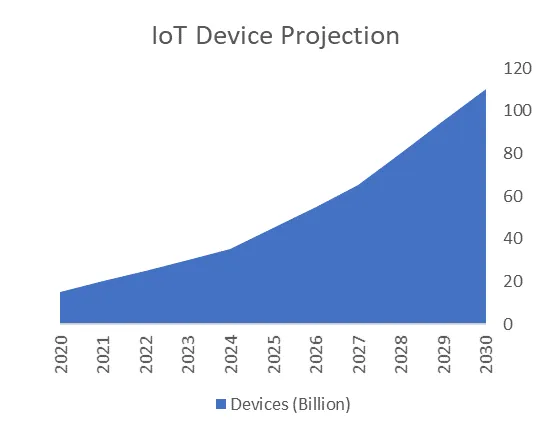IoT deconstructed
Blog: Capgemini CTO Blog
There has been an explosion of IoT devices in the market. From fitness trackers to drones, Amazon Alexa to Google Home, the list is ever increasing. The graph below shows the projection of IoT devices for the next 10 years. The number of IoT devices will double in the next four years and growth will be exponential thereafter. 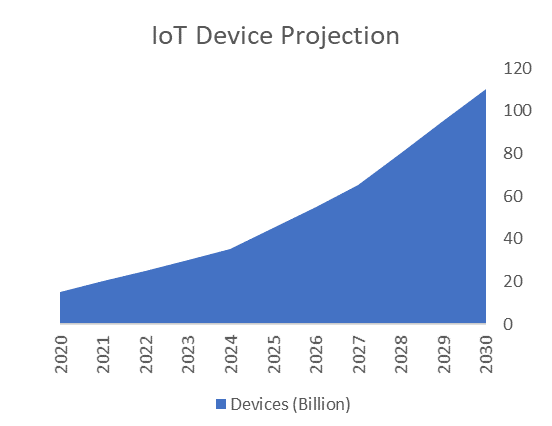 The number of IoT devices will exceed the number of mobile devices 6:1 by 2022. The main driver of this is cost reduction. A lot of manual and labor-intensive tasks have been replaced by IoT devices. The next big driver is to improve the business processes and productivity. The fierce competition to provide the best user experience has also contributed to this growth.
The number of IoT devices will exceed the number of mobile devices 6:1 by 2022. The main driver of this is cost reduction. A lot of manual and labor-intensive tasks have been replaced by IoT devices. The next big driver is to improve the business processes and productivity. The fierce competition to provide the best user experience has also contributed to this growth.
From a regional point of view, China has the most per capita IoT devices, followed closely by the US and Korea.
When it comes to sectors, 30% IoT devices are used in the manufacturing industry. This includes sensors capturing real-time analytics and health checks, robotic machinery, and automated industrial conveyor belts. The next biggest sector is consumer IoT devices. 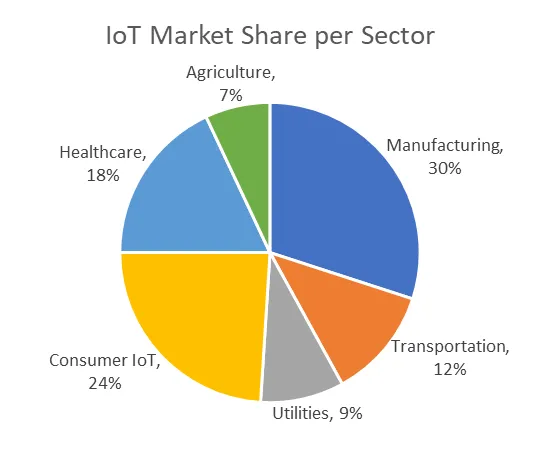 The most common ones are fitness trackers, voice-enabled smart devices such as Alexa, and smart homes. Healthcare is emerging as one of the biggest consumers of IoT. With applications such as ingestible sensors, critical data points from internal organs are captured, which can help in the timely detection or prevention of disease. Next in line is the transportation sector with autonomous vehicles constituting the biggest use case. The utilities sector contributes 9%, with use cases such as sensing and reporting the pressure in pipes or reporting on the health index of pipe waters. Agriculture also presents new IoT use cases, such as measuring and recording the moisture and nitrogen levels in soil in order to estimate optimal planting time to ensure maximum yield. The seeds of IoT, which were sown by Kevin Ashton in 1999, are yielding fruit today and for years to come.
The most common ones are fitness trackers, voice-enabled smart devices such as Alexa, and smart homes. Healthcare is emerging as one of the biggest consumers of IoT. With applications such as ingestible sensors, critical data points from internal organs are captured, which can help in the timely detection or prevention of disease. Next in line is the transportation sector with autonomous vehicles constituting the biggest use case. The utilities sector contributes 9%, with use cases such as sensing and reporting the pressure in pipes or reporting on the health index of pipe waters. Agriculture also presents new IoT use cases, such as measuring and recording the moisture and nitrogen levels in soil in order to estimate optimal planting time to ensure maximum yield. The seeds of IoT, which were sown by Kevin Ashton in 1999, are yielding fruit today and for years to come.
Problems in today’s IoT world
With so many solutions to the same problem, we have “PODs” of IoT with each product or organization focusing on their own specific use cases and product line. For example, a health tracker band checks the basic parameters of well-being by monitoring critical parameters and it alerts the user in the event of an anomaly. Similarly, an autonomous car will take an individual from point A to point B based on the user’s inputs or set routine.
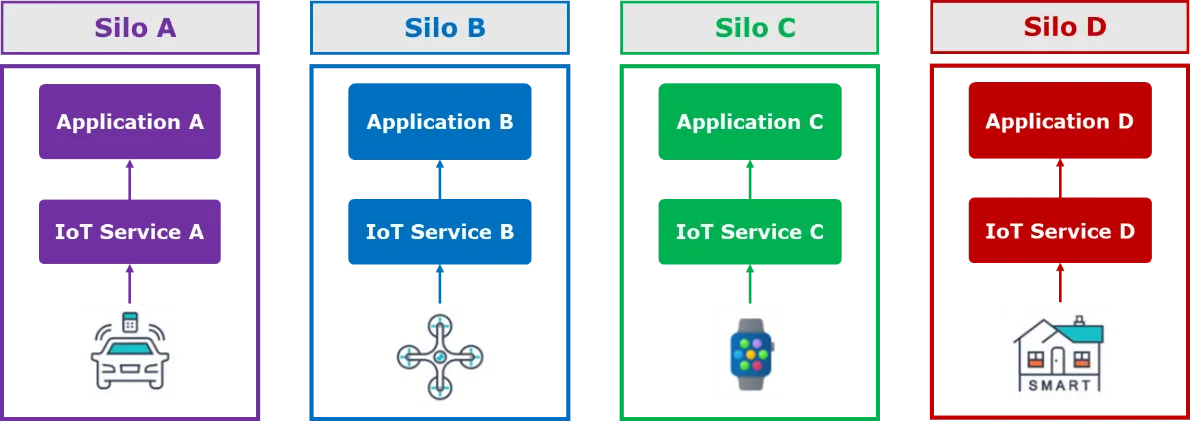
We need to move from a silo-based IoT solution where a vendor will talk only about products that they are offering, to a more holistic approach, which cuts across use cases and vendors.
Where there is a problem, there is often a solution
We need to build a top layer that would allow data to be exchanged between different products and use cases to achieve a holistic IoT environment. This cross-POD exchange of data and analysis of data resulting in holistic and meaningful output is the end state.
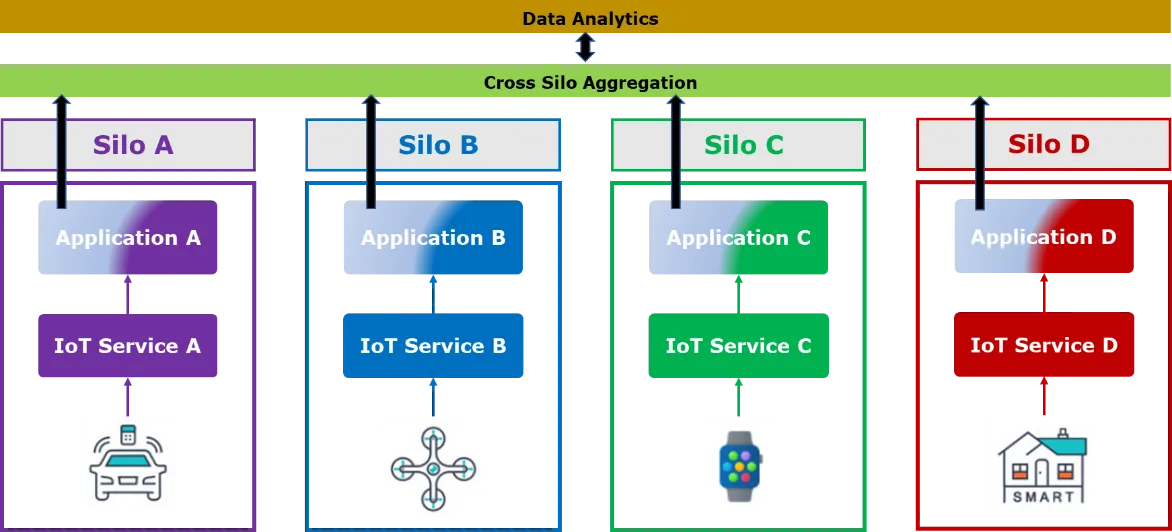
We can try to understand this with an example. Let’s imagine a person riding in a fully autonomous car, wearing a smart watch. The smart watch is capturing all the wearer’s data points and sharing that information on the cloud for real-time analysis. At the same time, the vehicle in which the person is travelling knows that it must travel from point A to point B. What if the person in the car suddenly has a heart attack? His ability to act at that time is questionable. In such a scenario, the smart watch should be able to detect the person’s situation and direct the autonomous car to find the nearest hospital and go there instead. It is when our devices can make similar decisions and take similar actions, that we will have reached the state we want to reach.
IoT – what’s under the hood
To understand IoT, we need to peel off its many layers. There are four architecture layers below the user layer in IoT.
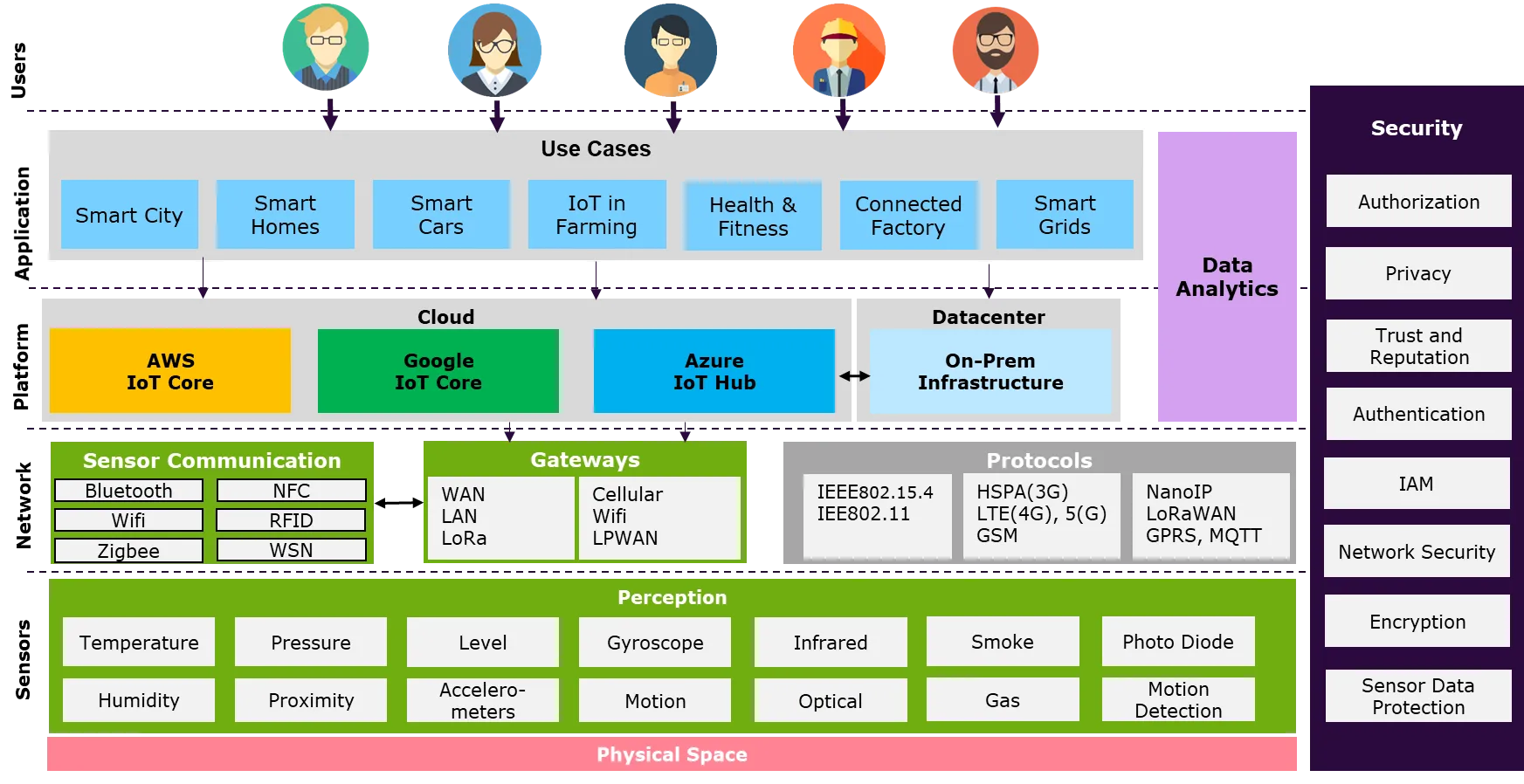
At the bottom is the sensory layer, which is built on the physical space. This is where all the sensors exist, which collect all the data like temperature, humidity, pressure, flow, ultrasonic, etc.
The second layer is the network layer. This layer communicates with the layer below, which is the Sensor layer and the layer above, which is the platform layer. Using this layer, data captured by the sensors is transferred to the central IoT platform. Modes of transportation of data can be Wifi, Bluetooth, Lora, Sigfi, etc.
Next is the platform layer, which stores and processes the data. The platform layer enables you to manage the IoT devices while keeping a track of multiple sensors, where the data is coming from and how you manage it. Azure, AWS, Google are the most common IoT platforms. This is the device management layer of the IoT.
Next is the Application layer. This layer uses the data and converts it into values. For example, use data and put it into a machine learning model using tensor flow. To create a model, to embed into application. Another possibility is to embed this application into the device, so the device becomes an edge device. This would reduce network requirements significantly.
Security in IoT includes both physical device security and network security, encompassing the processes, technologies, and measures necessary to protect IoT devices and the networks they’re connected to, which transmit massive amounts of data. It is a vertical function that runs across all the functional layers of IoT.
The massive amount of data generated by IoT devices has value only if it is analyzed, which brings data analytics into the picture. Analytics is used to examine big and small data sets with varying data properties to extract meaningful conclusions and actionable insights. These conclusions are usually in the form of trends, patterns, and statistics that help businesses to implement effective decision-making processes.
Conclusion
We are only grazing the tip of the iceberg when it comes to IoT. It will bring in the next big revolution after the telephone and it will blur the lines between beings and things. In the long run, only those organizations will survive that will create and adapt to an ecosystem with cross-domain integrations.
Please visit our connected office offer page, to learn more about our Smart building solutions (Smart Building & IoT Platform and Managed IoT platform).
*Graphs are attributed to https://www.statista.com/, and representing author’s point of view.
